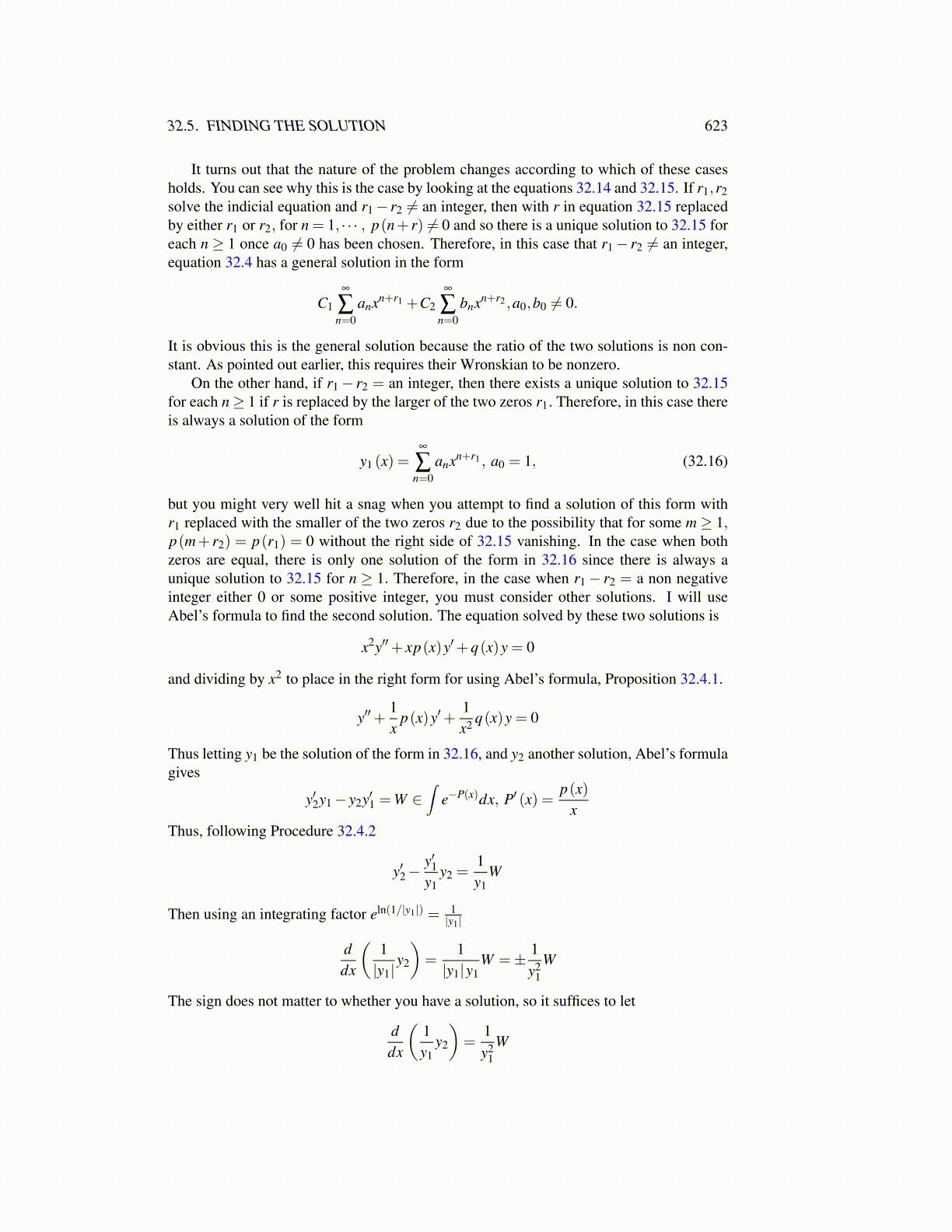
32.5. FINDING THE SOLUTION 623
It turns out that the nature of the problem changes according to which of these casesholds. You can see why this is the case by looking at the equations 32.14 and 32.15. If r1,r2solve the indicial equation and r1− r2 ̸= an integer, then with r in equation 32.15 replacedby either r1 or r2, for n = 1, · · · , p(n+ r) ̸= 0 and so there is a unique solution to 32.15 foreach n ≥ 1 once a0 ̸= 0 has been chosen. Therefore, in this case that r1− r2 ̸= an integer,equation 32.4 has a general solution in the form
C1
∞
∑n=0
anxn+r1 +C2
∞
∑n=0
bnxn+r2 ,a0,b0 ̸= 0.
It is obvious this is the general solution because the ratio of the two solutions is non con-stant. As pointed out earlier, this requires their Wronskian to be nonzero.
On the other hand, if r1− r2 = an integer, then there exists a unique solution to 32.15for each n≥ 1 if r is replaced by the larger of the two zeros r1. Therefore, in this case thereis always a solution of the form
y1 (x) =∞
∑n=0
anxn+r1 , a0 = 1, (32.16)
but you might very well hit a snag when you attempt to find a solution of this form withr1 replaced with the smaller of the two zeros r2 due to the possibility that for some m≥ 1,p(m+ r2) = p(r1) = 0 without the right side of 32.15 vanishing. In the case when bothzeros are equal, there is only one solution of the form in 32.16 since there is always aunique solution to 32.15 for n ≥ 1. Therefore, in the case when r1− r2 = a non negativeinteger either 0 or some positive integer, you must consider other solutions. I will useAbel’s formula to find the second solution. The equation solved by these two solutions is
x2y′′+ xp(x)y′+q(x)y = 0
and dividing by x2 to place in the right form for using Abel’s formula, Proposition 32.4.1.
y′′+1x
p(x)y′+1x2 q(x)y = 0
Thus letting y1 be the solution of the form in 32.16, and y2 another solution, Abel’s formulagives
y′2y1− y2y′1 =W ∈∫
e−P(x)dx, P′ (x) =p(x)
xThus, following Procedure 32.4.2
y′2−y′1y1
y2 =1y1
W
Then using an integrating factor eln(1/|y1|) = 1|y1|
ddx
(1|y1|
y2
)=
1|y1|y1
W =± 1y2
1W
The sign does not matter to whether you have a solution, so it suffices to let
ddx
(1y1
y2
)=
1y2
1W